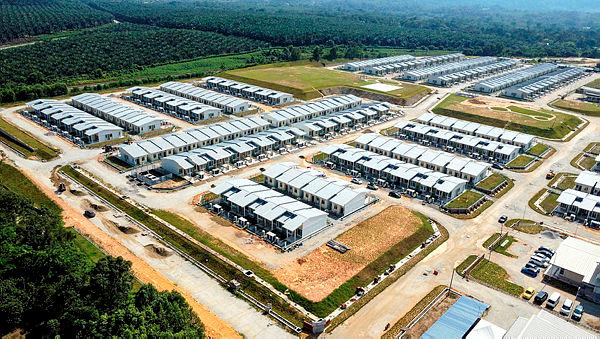PETALING JAYA: Despite residential properties dominating the real estate market in the third quarter of 2023, economists say most houses remain above what potential buyers can afford.
Bank Muamalat Malaysia Berhad chief economist Dr Mohd Afzanizam Abdul Rashid said the average house price in the third quarter of last year stood at RM458,751, with the monthly mortgage repayment averaging RM1,971.
“Residential properties comprised 62.9% of the total real estate market share, with transactions valued at RM28.4 billion. It contributed to a 22.6% increase in property transactions, reaching RM57.1 billion.
“The number of unsold properties decreased to 25,311 units from 36,863 units during its peak in the last quarter of 2021, indicating a relatively stable residential property market characterised by steady house prices and reduced inventory,” he said.
“However, despite the positive outlook, the ‘median multiple approach’, which is used to establish ‘affordable housing’ prices at three times the median annual salary, showed the price range of most houses in the country to be unaffordable.”
Mohd Afzanizam said as of 2022, the median household income for the country stood at RM6,338 per month, so the average homebuyer in Malaysia could technically afford to purchase a house costing only about RM228,168.
He said the figure pales in comparison to Kuala Lumpur’s average house price, which is a staggering RM770,543 when a potential homebuyer can only afford to purchase one costing RM368,424.
“As for Selangor, the average house price is RM520,456 but affordable housing should be priced at only RM359,388. The average house price in Sarawak is RM504,542 but is only affordable if priced at RM179,208.”
He also said the figures show that despite the strong demand for affordable homes, there is a disparity in terms of available houses, location and quality due to the discrepancy between average income levels and house prices.
He said many Malaysians encounter formidable challenges in purchasing a house, particularly in urban locations such as the Klang Valley, Penang and Johor Bahru.
Mohd Afzanizam added that increased rural-to-urban migration has significantly raised the demand for housing in cities and intensified the challenges related to affordability, while the stigma associated with owning low-cost properties, which are often perceived as being of “inferior quality” makes such units less desirable.
“This hampers investment and development in the low-cost housing segment, so it is crucial to foster an inclusive and sustainable housing market.”
He said adding to these challenges are policy changes, such as the subsidy rationalisation, sales tax increase from 6% to 8%, and the new Low-Value Goods tax of 10%, which will weaken the buying power of potential house owners.
Universiti Teknologi Mara senior economics lecturer Dr Mohamad Idham Md Razak said beyond just income, banks assess credit scores, debt-to-income ratios (DTI), employment stability and housing expenses before approving a mortgage.
“Bank Negara Malaysia currently mandates a maximum DTI of 60%. This means a potential house buyer with a gross salary of RM4,000 can have maximum monthly instalments of only RM2,400, which is 40% of his income.
“The criteria to purchase an affordable house is stringent, making it difficult for many deserving individuals and families to qualify. Even the process of applying for and securing an ‘affordable house’ is complex and challenging,” he said, adding that this has caused the expansion of the rental market.
“A considerable portion of the population is now uninterested in owning a house, resulting in an increasing number of individuals who choose to rent for life.”









